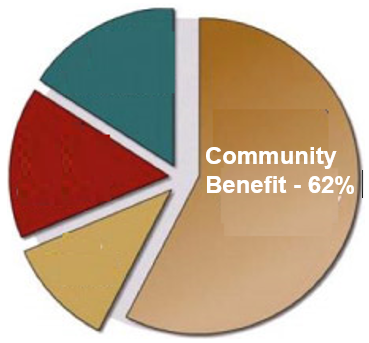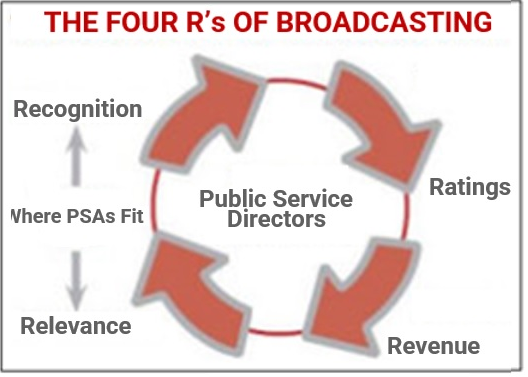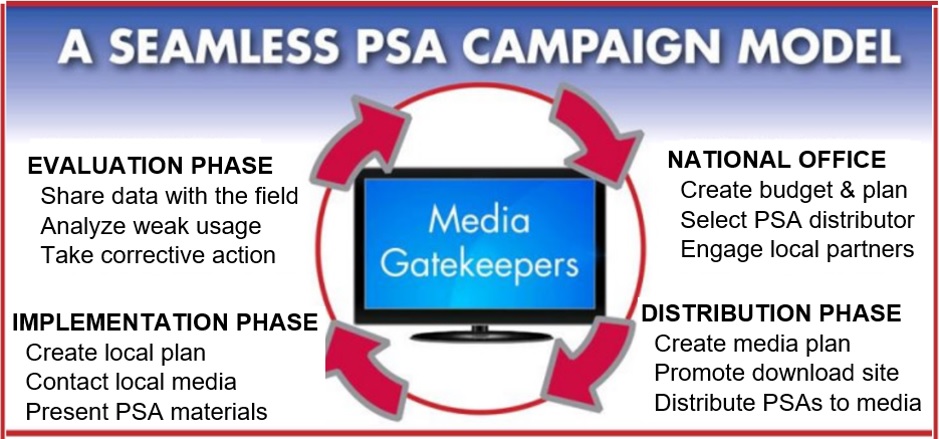Think for a moment that you are in charge of marketing for a major corporation with a field sales force of people around the country. When trying to introduce a new product or generate more sales, would you overlook your field sales force? Would you ignore or circumvent your partners out there pounding the pavement, day in and day out, like Willy Loman, with a shoeshine and a smile?
Of course not. That would be marketing suicide. Yet many non-profits overlook – or do not fully utilize – one of their most important assets – the people who can take a national issue and implement it locally.
Why Localism Matters
Why is important to involve your community partners? Two reasons come to mind. First, that is where real change takes place. Secondly, to be successful in implementing any national issue, you must engage local media, because obviously they control the medium and the message.
As all politicians know so well, social change takes place in the thousands of hamlets, villages, towns and cities that comprise our national fabric. There is a reason why all the most successful non-profits such as Make-A-Wish  Foundation, the National Multiple Sclerosis Society, American Red Cross and hundreds of others have local chapters. That is where they can efficiently deliver services which cater to the needs of their stakeholders. From the media perspective, that is also where their audience is located and the sources of their ad revenues, so the concept of localism is very strong, as shown by this graph.
Foundation, the National Multiple Sclerosis Society, American Red Cross and hundreds of others have local chapters. That is where they can efficiently deliver services which cater to the needs of their stakeholders. From the media perspective, that is also where their audience is located and the sources of their ad revenues, so the concept of localism is very strong, as shown by this graph.
In a survey conducted among 1,000 local broadcast TV stations, nearly two thirds of the respondents indicated that PSAs which benefitted the local community were most important. It is also important for you to understand the media mindset – particularly for broadcast TV, which will deliver the largest audience and value for your campaign.
 Shown in this graphic is what we call the Four R’s of Broadcasting. What really matters to local broadcasters is audience size as shown by Ratings, because that is what their advertising Revenues are based upon.
Shown in this graphic is what we call the Four R’s of Broadcasting. What really matters to local broadcasters is audience size as shown by Ratings, because that is what their advertising Revenues are based upon.
In order to build a bigger audience and the revenue that comes with it, the media need to provide Relevant programming and generate Recognition in their local market. This is where PSAs come into the picture, because they help the media demonstrate support for important local issues and get recognized for that support.

Roles
If you think of a concentric circle, with the national office at the top, and the media in the center, such as the one shown here, it is easy to configure a seamless campaign model to ensure that all important steps are included in your distribution and evaluation plan.
At the national level, when implementing an education campaign, there are a variety of functions and activities to plan and execute. These include working with your advertising agency or producer to create compelling, functional messages that will resonate with local media. Then you need to select a distributor which will develop the media plan, handle distribution/promotion, help engage local partners and evaluate campaign impact.
The key to the success of the entire plan are the people on the ground who can make local media contacts, present your materials in a convincing manner, and provide follow-up, depending upon what the local media will use, or what else they may need.
Sharing Information With the Field
 One way to share information on your campaign with community partners is to stage a Webinar. Via this device, you can show your PSAs, discuss all aspects of how you intend to implement the campaign, and show the people in the field how to access evaluation reports.
One way to share information on your campaign with community partners is to stage a Webinar. Via this device, you can show your PSAs, discuss all aspects of how you intend to implement the campaign, and show the people in the field how to access evaluation reports.
To provide more details on how to make local media contacts, read the article: Placing PSAs in Your Community.
The Internet is the perfect mechanism for sharing information with people anywhere in the world with access to the Web. You can either post information that will be helpful to your local community partners, or you can ask your distributor to do it. Either way, here are some things that should be on the national website:
- PSAs, videos, radio spots, and creative samples of outdoor posters
- Instructions on how to tag local TV PSAs and get them to either your local community partners, or to the media in the appropriate format
- Facts on your issue, which your partners can use when making their local presentation.
- Evaluation reports broken out by the local jurisdiction, so your partners can see where they are, and are not getting exposure.
Data Sharing
Once your campaign is distributed and you begin getting evaluation reports, which are also posted to the client’s reporting portal, it is important to monitor where you are and are not getting exposure.  One way to do this is via an interactive map, as shown below that depicts exposure by state according to four levels of usage.
One way to do this is via an interactive map, as shown below that depicts exposure by state according to four levels of usage.
You can let your cursor linger over the map to bring up campaign usage data for a particular state and various colors indicate usage for four different levels of exposure.
The Take-Away
Following are key points to ensure your campaign is successful:
- Create a comprehensive plan to show how all the parties required for a successful program will work together
- Share everything with your partners; tell them what you expect them to do; give them resources to get it done
- Study the areas where your exposure is weak; take corrective action
- Most important – thank the media which have supported your cause as they will likely remember it the next time you request PSA support



Leave A Comment